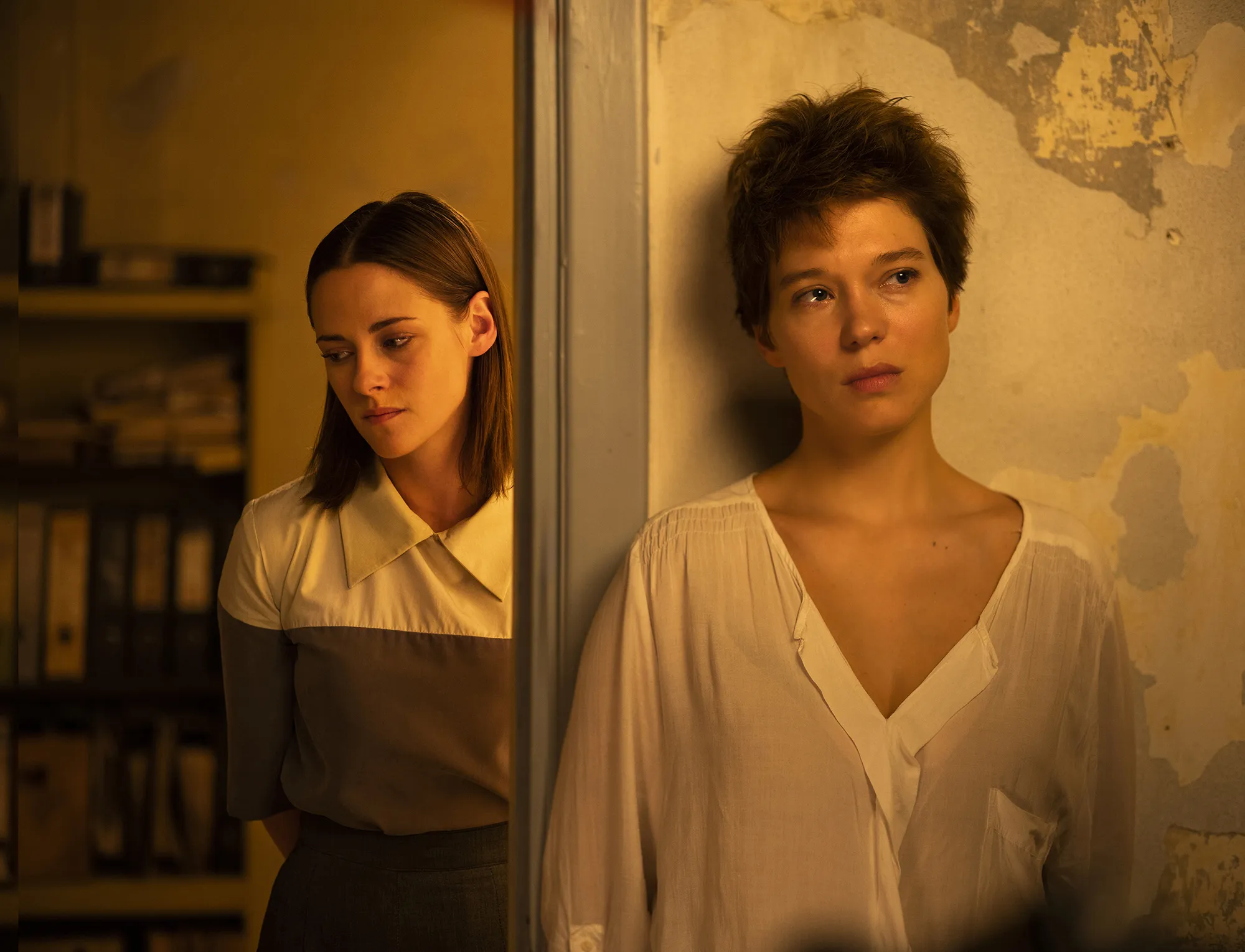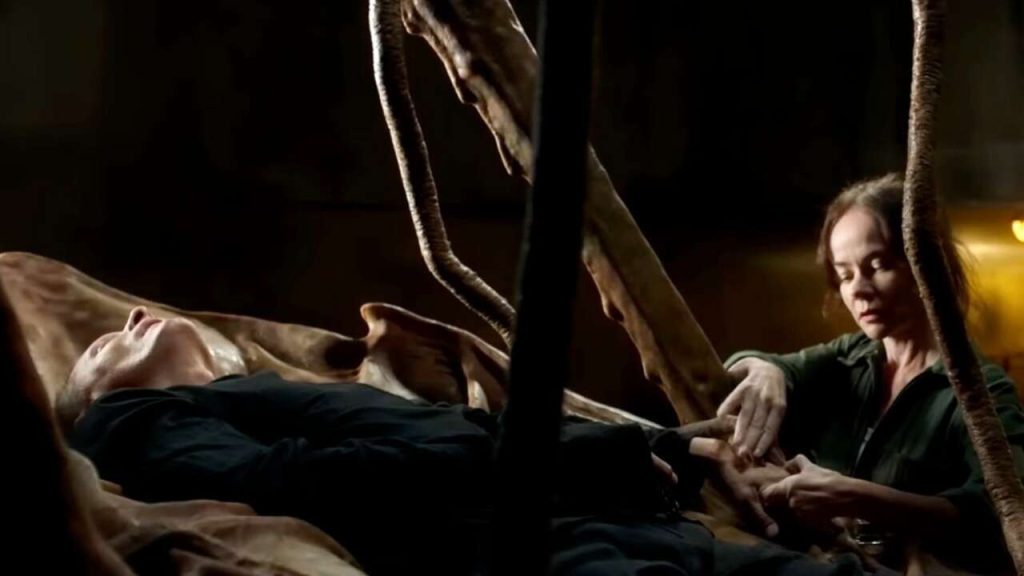
David Cronenberg's movie Crimes of the Future (2022) was advised to me by an Iranian friend, horror author Behzad Ghadimi. The suggestion came from a little fireside chat about the overlap of horror and science fiction in the cyberpunk field. A subgenre very concerned with fusing information technology into the flesh, so to speak. Classic body horror on a par with movies like Alien (1979) and The Fly (1986).
By Emad Aysha
Future Crimes is cyberpunk, although in a typically organic mode, for Cronenberg. Since I was a kid, I’ve been a big fan of him, so I can recognize the various concerns and techniques he uses here. It begins very non-assumingly with a child on the seaside and his mother admonishing him next to a capsized ship.
That piques your curiosity straight away, making you think this kid is a monster or something that cannibalized the people on the boat. Then you see him eating plastic, and his mom eventually kills him, telling his dad to come and pick up the body.
Cut to the next scene where you have some weird guy in an upside-down shell with what looks like umbilical cords holding it up. It turns out it’s a bed, some convenient device that moves to help you sleep, with the umbilicals monitoring your impulses and adapting the bed accordingly.
The occupant in question, Saul Tenser, is an artist played quite innovatively by Viggo Mortensen. His specialty is growing unwarranted organs and getting his luscious assistant/roommate – they’re not doing it together – Caprice (Léa Seydoux) to slice them out of him in front of an adoring audience.
In this wacky world, people are surgically altering themselves, literally slashing and opening themselves up just for the fun of it. The government is setting up a vice unit to combat it all and a registry for new organs to track the impact on human evolution.
I’ve seen imagery like this before in Cronenberg’s eXistenZ (1999), a movie about VR games that mess with your mind, but again through organics and deliberately in the countryside and with very ordinary looking people, in marked variance with the urban, youthful, high tech setting for standard cyberpunk.
As for substitute organs, he had that idea from his very first movie, Shivers (1975), with a character who is a prototype for Seth Brundle in The Fly. Even the term ‘inner beauty’ for organ beauty contests is borrowed essentially from Cronenberg’s masterpiece Dead Ringers (1988).
So, the director is treading familiar ground here but expanding on these previous incarnations of themes and motifs.
Again, the setting is mundane, not high-tech at all, sunny, and neglected. The registry is old-fashioned, I think set in Greece, with folios and paperwork. And Saul Tenser, in my opinion, is a prototype for David Cronenberg.
The actor is dressed up like him, someone who is tempted by all this biological madness but pensive nonetheless and insists on understanding fully before judging.
Everyone is secluded, roommates eat by themselves, and surgery is the new sex. In the beginning, the boy was a genetic experiment to adapt man to the artificial environment he’s created for himself.
Hence, they are forcing themselves to eat synthetic food. It’s their way of redressing the balance of nature. A scary but very possible future that awaits us. You have an international cast, the cop in charge of the new vice squad is a black African, and an exciting mix of accents is displayed.
Cronenberg describes a polyglot Canada stuck between the old and new worlds, constantly shifting and changing as it incorporates new foreign elements into its soul, growing and mutating indefinitely. We already saw some of that in The Fly, with Brundle asking the computer if he ‘assimilated’ the fly only to find that he’s fused with it now, and his feral half will take over.
Cronenberg has been in a bad patch in his career for a while, doing gangster, period drama, or psychology movies that weren’t him. Cosmopolis (2012) got him back into existential form, another high point in his career.
The visuals are moody, creepy, beautiful, and not recycled from his older films. The technology has a very Giger quality to it too, and my God, the characters were fantastic.
Special mention to the mousy, hyper-performance of Kristen Stewart; she is not exactly my favorite actress, but she does an amazingly wholesome job here, someone battling temptations in a petty bureaucrat job that promises no rewards. Like a celebrity groupie.
Everyone is zany and out of it but perfectly natural and believable simultaneously. Scott Speedman is very sympathetic too, still leftover as he is from Underworld (2003). Léa Seydoux is stunning here, and I don’t ‘just’ mean her body.
The concept of tattoos creating organs is what SF is all about, the act of anticipation birthing creation. (Behzad tells me the same goes for Cronenberg's Scanners, with the mind being so powerful it can disfigure the body). And the future is scary; anything new freaks you out at first.
The boy at the beginning is a very deliberate ploy or warmup exercise for what follows, while the mundane setting is both familiar to stop you freaking out and intriguing in its own right. It has a bit of a post-apocalyptic feel and makes you wonder when this is happening, the future or the present.
So horror isn’t just a theme in SF, a future possibility worth exploring, but part of the techniques deployed by SF creators. Cyberpunk explores our addiction to information and our roboticization at the hands of machines, our very creations.

ENTRAILS OF INDUSTRY: Even a director as distinguished as David Cronenberg needs a biomechanical tune-up once in a while!
Tools are making us their tools, an old, old anxiety in European philosophy, probably from Heidegger. How ironic that Descartes’ generation welcomed machine philosophy as an emotionally numb escape from the horrors of their world of religious conflict.
On the plus side, at least Cronenberg isn’t externalizing all his anxieties onto East Asians, a common ploy with cyberpunk, but bringing it all back home. If anything, the African cop is the most human of the characters, radiating warmth and solidity.
Are these the birth pangs of a new cyberpunk? Let’s hope so!!







Informative write up on David conenbetg's work on horror and cyberpunk mix.
Thanks!! I'm especially proud of this article, and couldn't have done it without Behazad's help and prodding!!
[…] در مجلهی لیبریوم منتشر شده است. اصل مقاله را از اینجا […]
Hey everybody, we've gone global. Here's the Farsi translation of my article: https://osanschool.ir/mag/crimes-of-the-future/